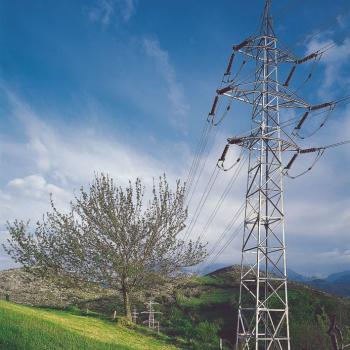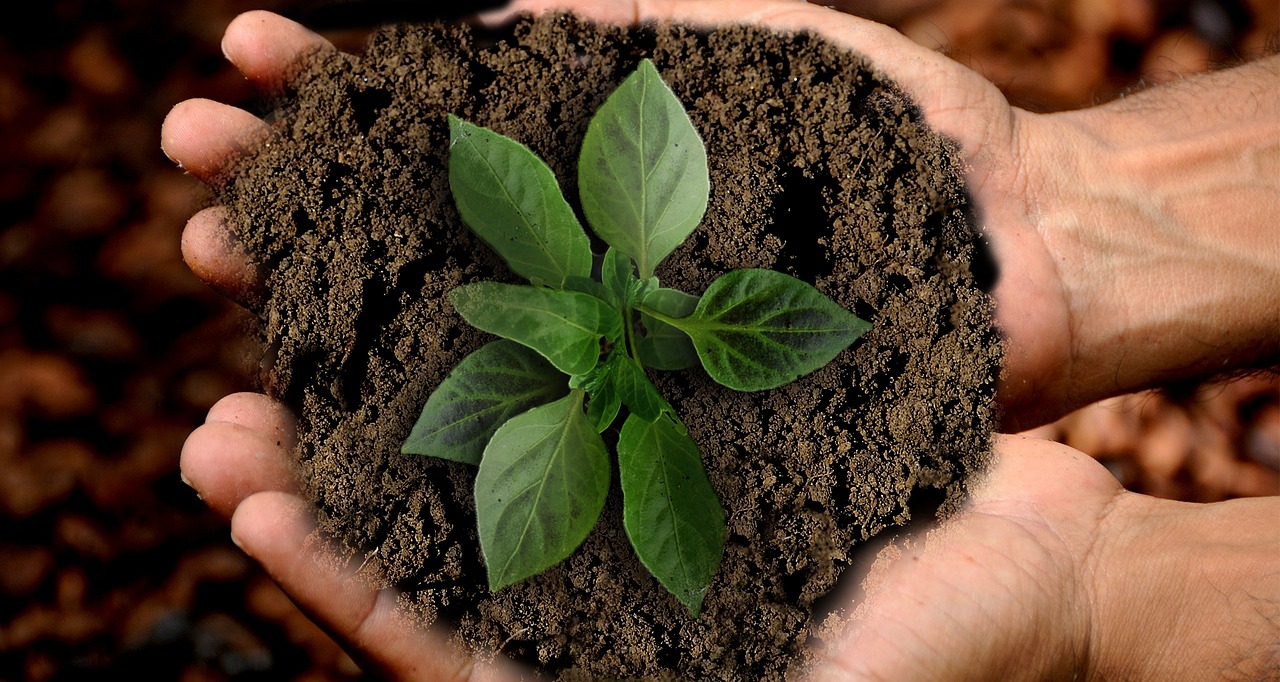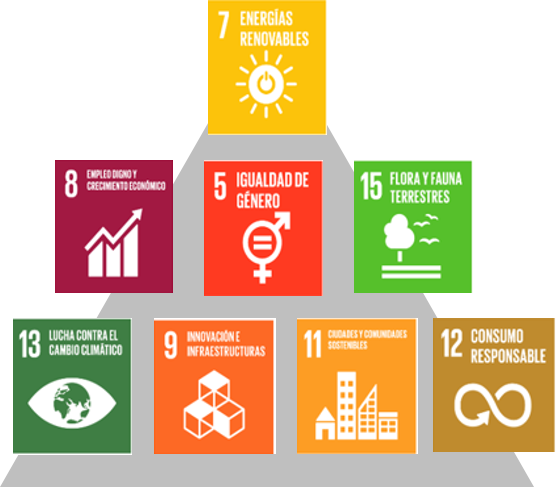EDP Spain is a business group whose main activity is to generate and transfer electricity, and to distribute and sell electricity and gas.
EDP Spain thus contributes to the economic growth of the different regions where it operates, both through direct activities and the ancillary activities required for its operations, generating economic flows that produce a multiplier effect, inducing economic effects in many other sectors.
Wealth generation in operation areas
Most EDP Spain assets are located in Asturias, Cantabria and the Basque Country. This presence fosters a social development model based on sustainable growth, generating a dynamic effect for local economies.
EDP's socioeconomic impact in Asturias, Cantabria and the Basque Country can be quantified by estimating direct, indirect and induced jobs associated with the company's activities in different sectors, as well the overall generation of wealth, measured through its contribution to regional GDPs.
To quantify it, we have considered EDP Spain's expenditure with goods and service suppliers in each region, employees' expenditure from their wages, and the taxes each region levies from EDP Spain's activities.
Distribution of GDP generated by EDP Spain in Asturias, Cantabria and the Basque Country

The total expenditure with suppliers in the three regions totals more than 548 million euros, distributed across sectors that are related to the company's activities (electricity generation, gas, steam and air conditioning) and in other local economy areas (architecture and engineering services, storage, electrical supplies, etc.) Employees' expenditure from their wages amounts to 60 million euros, whereas taxes amount to 351 million euros. The overall GDP contribution from EDP Spain's activities in Asturias, Cantabria and the Basque Country in 2015 is estimated to stand at 1351 million euros, which represents 1.4% of the Asturian, Cantabrian and Basque GDP as a whole.
Asturias
EDP Spain's contribution to the Asturian GDP in 2015 amounts to 812 million euros, representing 3.8% of the region's GDP.
This contribution is diversified across multiple sectors of the local economy; 41% corresponds to electricity, gas, steam and air conditioning, followed by anthracite, coal and lignite extraction with 11.31%.
Cantabria
EDP Spain's contribution to the GDP in Cantabria amounts to 24 million euros, which is approximately the overall amount spent by the Cantabrian government on the region's environment and forest protection program.
As in the case of Asturias, the contribution is distributed across different activity sectors, with Public Administration being responsible for about 30%, followed by the technical services industry with about 15%.
Basque Country
EDP Spain's contribution to the GDP in the Basque Country amounts to 515 million euros, which represents 1% of the Basque GDP - enough to cover the region's investment in RDI.
As far as distribution is concerned, the first position is taken by Public Administration, a sector that represents over 57% of the GDP contribution, followed by the gas, steam and air conditioning industries with 5%.

Job creation in operation areas
EDP Spain's expenditure with suppliers, Public Administration payments through direct and indirect taxes, and employees' expenditure from their wages foster the creation of indirect and induced jobs in different activity sectors.
Asturias
The company's activities in Asturian workplaces provide direct employment to 1023 individuals. Moreover, each direct job creates over 4 indirect an induced jobs. The overall job creation in Asturias is estimated to stand at 5,391 individuals
Cantabria
Direct employment in Cantabria benefits than 41 individuals; however, every direct job creates 5 other indirect and induced jobs. The overall contribution to job creation in Cantabria is estimated to stand at 275 individuals.
Basque Country
In 2015, EDP Spain facilities located in the Basque Country employed 286 individuals. The company's activities invigorate the Basque regional economy by creating 4,789 direct, indirect and induced jobs in different activity sectors. Therefore, every direct job creates 16 indirect and induced jobs. In the Basque Country, the company's activities create over 4,500 jobs, which represent 20% of the jobs created by the industry sector in the region.
Corporate social responsibility goes well beyond a company’s legal obligations towards society and the environment. For this reason, the EDP Group is present in several sustainability indices.
It’s all about the recognition of human rights, of ethical, social and environmental issues, and of customers in their business strategy.
Profitability is therefore achieved not only for the shareholder, but for other stakeholders and society as well.
Sustainability indices are an important tool for the EDP group because they allow us to quantify the company’s sustainability performance and contribute to the continuous improvement of our operations, namely by adapting the latter to market trends.
Sustainable Development Indexes
We are focused on success
Monitored in various activity areas, our performance has been widely recognized by the Sustainability and Corporate Social Responsibility indices where EDP is included.
In September 2015, representatives from 193 countries adopted an historic commitment by approving the 17 Sustainable Development Objectives that, unlike their predecessors, were consensual after more than three years of negotiations, and with the participation of all member countries of the UN, NGOs and other actors.
In general terms, the ODS aim to eradicate poverty, combat inequality and combat climate change for the next 15 years, from 2016 to 2030, in order to achieve a decent life for all so that no one is left behind.
Previously, in 2000 the following were adopted Objectives of Development of the Millennium] whose term expired in 2015. It was the promise to defend the principles of human dignity, equality and equity, and to free the world from extreme poverty. Thus, a total of eight goals and a series of measurable and time-bound goals, established the bases for solving the biggest development challenges of our time. The year of 2015 was the date set for compliance, however not all set goals were achieved

In 1990, almost half the population of the regions in development lived on less than $ 1.25 a day: extreme poverty halved five years before 2015.
In 2012, 1 in 10 school-age children did not attend school. It is estimated that the 50% that do not attend classes live in areas affected by conflict.
In 2012, all developing regions reached, or
were close to reaching gender parity in primary education. Gender disparity increases in secondary education.
Between 1990 and 2013, the world’s maternal mortality rate dropped by 45%.
Since 1990, emissions of greenhouse gases increased almost 50% but substances that deplete the ozone layer have been virtually eliminated worldwide.
Now the Sustainable Development Goals (SDG) are the new challenge of the UN to complete outstanding work. The 17 Sustainable Development Goals are:
Goal 1. Ending poverty in all its forms throughout the world. Still 836 million people currently living in extreme poverty. It is expected to reduce by half the proportion of people living in poverty and to guarantee that all inhabitants of the planet have the same rights.
Goal 2. End hunger, achieve food security and the improvement of nutrition and promoting sustainable agriculture. Poor nutrition causes 45% of deaths of children under the age of 5. We will work to ensure the sustainability of production systems, of food production and to implement agricultural practices that increase productivity and contribute to the maintenance of ecosystems.
Goal 3. Ensuring a healthy lifestyle and promoting wellness for everyone, at all ages. More than 6 million children continue to die every year before the age of five. One of the main goals is to reduce the global maternal mortality rate below 70 per 100,000 live births.
Goal 4. Ensure an inclusive, equitable and quality education and promote learning opportunities throughout life for all. 58 million children in the world are not at school. It will be ensured that all children have full, free, fair and high quality primary and secondary education.
Goal 5. Achieving gender equality and empowering all women and girls; eliminating all forms of violence against all women and girls in the public and private sectors, including trafficking and sexual exploitation.
Goal 6. To ensure the availability of water and its sustainable management and sanitation for all. 884 million people around the world still lack access to safe drinking water and is necessary to achieve equitable access to adequate sanitation and hygiene for everybody.
Goal 7. Ensuring access to affordable, secure energy, sustainable and modern for all. One in five people still do not have access to modern electricity and for 2030, it is expected to ensure universal access to affordable, reliable and modern energy services.
Goal 8. Promoting sustained, inclusive economic growth and sustainable, full and productive employment and decent work for everybody. 1 in 3 workers lives below the poverty line. The goal is a gross domestic product growth of at least 7% annual in the least developed countries.
Goal 9. Building resilient infrastructure, promote the inclusive and sustainable industrialization and encourage innovation to support economic development and human well-being, with special emphasis on equitable and affordable access for all.
Goal 10. Reducing inequality within and between countries; progressively achieving and maintain revenue growth of 40% poorest sector of the population at a higher rate than the national average.
Goal 11 . Making cities and human settlements inclusive, safe, resilient and sustainable.
Goal 12.Guaranteeing patterns of consumption and production which are sustainable in order to reduce global food waste per capita in 2030.
Goal 13. Take urgent measures against climate change, through education and awareness of the people and the negotiating agreements and national and international measures to acting together against the climate change; minimizing its impact on people’s lives.
Goal 14. To conserve and use sustainably the oceans and seas. For 150 years, the acidification of the oceans has increased by 30%, affecting marine life. Therefore, for 2020 it is expected at least to retain at least 10% of coastal and marine areas.
Goal 15. Protecting forests and fighting desertification, creating laws to preserve ecosystems at a world level, reducing environmental degradation and preserving biological diversity.
Goal 16. Promote peaceful societies and better access to Justice. 51 million people are displaced from their homes as a result of war and violence. It is necessary to end the abuse, exploitation, trafficking, torture and all forms of violence, reducing mortality rates associated worldwide.
Goal 17. Strengthen and revitalize the Global Alliance for Sustainable development. Only Denmark, Luxembourg, Norway and Sweden and the UK meet the commitment to allocate 0.7% of their GDP to official development assistance.
EDP and Sustainable Development Goals
Adoption of Sustainable Development Goals (SDG) It is a transition to a new paradigm. \ \ In addition to implications in the field of politics and of the international institutions, responsibility for compliance is not only restricted to countries, but also to businesses and the private sector as well as society in general. \ The Sustainable Development Goals can only be achieved through the active participation and joint effort from all parties.\ During the last decade, Corporate Social Responsibility (CSR) has been spreading rapidly, being introduced in Policies and Principles of companies, and tackling from the point of view of the management of risks that the company assumes when its social and environmental impacts are not taken into account./ With this focus, sustainability practices of companies have had little impact in reducing the social problems caused by unemployment, declining household income or forced evictions, for example. \ With the commitment acquired through the sustainable Development Objectives, the organizations should review their strategy in matters of CSR so that, without relinquishing prevention of irresponsible behaviors from the company, they get involved in the creation of value for communities and society as well as for the organization itself.
Infographic
Sustainable Development Goals
In this sense, EDP has defined 5 commitments to contribute to achieving the Sustainable Development Goals.

Commitment from EDP Spain with ODS
More than 2,600 Spanish companies are already directly involved in the implementation and development of ODS (many IBEX companies, such as SMEs and other organizations and entities). EDP is not an exception. The president, Antonio Mexia, introduced a year ago the individual commitments of the organization to combat climate change, commitments attached directly to the Objective of Sustainable Development No. 13: Combating climate change. But EDP has also designed and implemented in all its geographies many more actions to encourage the development of other objectives.
EDP Spain, as a relevant local agent in the autonomous communities, in which it is present, develops its own agenda of projects and local impact initiatives, ranging from the creation of value social development and citizenship, also contributing to the fulfillment of the ODS.

Pero EDP, además, ha diseñado e implantado en todas sus geografías muchas más acciones para favorecer el desarrollo de otros objetivos.
EDP España, como agente local relevante en las comunidades autónomas en las que está presente, desarrolla su propia agenda de proyectos e iniciativas con impacto local, las cuales van desde la creación de valor al desarrollo social y ciudadanía, contribuyendo también al cumplimiento de los ODS.
Así, EDP España ha desarrollado su propia agenda de proyectos e iniciativas con impacto local dirigidas a mejorar el valor de la sostenibilidad corporativa y fortalecer relaciones con los grupos de interés, trabajando en aquellos ODS con los que su actividad y estrategia están interconectadas. De este modo EDP España hace suyo el lema “Objetivos globales, acciones locales”:
- Ofrecer a los clientes productos y servicios que garanticen el acceso a la energía y la seguridad de suministro (ODS 7), desplegado convenios que cubren a aquellos clientes que pueden incurrir en causas de vulnerabilidad.
Acompañar a los clientes hacia un modelo de consumo y movilidad sostenible a través de la nueva estrategia desarrollada por Casa Inteligente EDP (ODS 12) y nuevas infraestructuras con soluciones inteligentes relacionadas con la energía (Innocity, Innovgrid).
Mejorar las condiciones de trabajo, la prevención de riesgos laborales, la conciliación de la vida personal y laboral, sin dejar de lado la importancia de los proveedores (ODS 8).
Promover la mejora continua a través del programa LEAN y fomentar la innovación a través del programa EDP Starter (ODS 9).
Mantener la certificación ambiental en el 100% de las instalaciones y el uso de gases siderúrgicos en la central de Aboño que contribuye a la reducción anual de emisiones de CO2. (ODS 13, 14 y 15)
Desplegar la Política de Gestión de Stakeholders de EDP construyendo alianzas con todos sus grupos de interés, conjugando la visión interna de la organización con las expectativas de los stakeholders (ODS 17).
EDP España está comprometida con otros ODS con marcado enfoque social a través de la Fundación EDP desarrollando proyectos y actividades con impacto en los colectivos más desfavorecidos.

Scholarship Plan 2015-2016, and the Startinnova project plan support for doctoral and University Challenge, havesupported the recognition of EDP Spain as and “Entity responsible for youth employment
In 2015, EDP Spain provided more than 56M € for expenses and investments related to the improvement and protection of the environment.